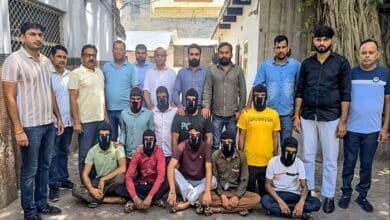
Shahi Snan Dates 2025: Complete Schedule, Significance & Rituals of the Royal Bath in Kumbh Mela
The Shahi Snan dates refer to the royal bathing days during the Kumbh Mela and Ardh Kumbh Mela, which are considered the holiest bathing events in Hinduism. These sacred dates are chosen based on astrological and religious calculations, aligning with planetary positions to offer the highest spiritual benefits. Devotees believe that bathing on Shahi Snan dates cleanses them of all sins and leads to moksha (liberation).
The Shahi Snan dates are significant because they are not just about a ritualistic dip in holy rivers but symbolize surrender to divine energy. These dates see millions of pilgrims and numerous Akharas (monastic orders of saints) participate in grand processions before taking their ceremonial dip. The magnitude of devotion and festivity around Shahi Snan dates draws worldwide attention.
The Akharas have the first right to bathe on Shahi Snan dates, and this procession is an awe-inspiring sight. Devotees wait for these days to get a chance to witness or partake in this spiritually elevating moment. Observing or participating on Shahi Snan dates is said to bring immense blessings and is a once-in-a-lifetime opportunity for many.
Shahi Snan Dates 2025: Full Schedule of Kumbh Mela Bathing Days
The Shahi Snan dates in 2025 are part of the Maha Kumbh Mela, which will take place in Prayagraj (Allahabad), one of the holiest pilgrimage sites in India. These dates are meticulously calculated based on celestial alignments such as Makar Sankranti and Amavasya.
Here are the major Shahi Snan dates in 2025:
-
14 January 2025 (Tuesday) – Makar Sankranti (First Shahi Snan)
-
29 January 2025 (Wednesday) – Mauni Amavasya (Second Shahi Snan)
-
3 February 2025 (Monday) – Basant Panchami (Third Shahi Snan)
-
12 February 2025 (Wednesday) – Maghi Purnima (Spiritual Bath)
-
26 February 2025 (Wednesday) – Maha Shivratri (Spiritual Bath)
Out of these, the first three are considered Shahi Snan dates where Naga Sadhus and other saints of Akharas bathe before the public. These specific days draw the largest crowds and require special arrangements due to the massive influx of people.
The government, administration, and religious organizations work tirelessly to manage the millions who arrive on these Shahi Snan dates. Proper planning and awareness about the Shahi Snan dates ensure a smooth experience for the pilgrims and saints alike.
Religious Significance of Shahi Snan Dates in Hindu Culture
The Shahi Snan dates hold deep spiritual relevance in Hindu dharma as they are believed to be times when the celestial and spiritual energies are at their peak. The act of taking a dip in the holy river during Shahi Snan dates is symbolic of purification, devotion, and detachment from worldly bonds.
According to legends, Shahi Snan dates are linked to the churning of the ocean (Samudra Manthan), where drops of Amrit (nectar of immortality) fell at four places: Prayagraj, Haridwar, Ujjain, and Nashik. These places became the venues for the Kumbh Mela, and the Shahi Snan dates are celebrated to commemorate these divine moments.
The sacred bath on Shahi Snan dates is not just a physical cleanse but a metaphysical transformation. It is said that by bathing on these days, one’s karmic debts are reduced and one moves closer to liberation. The saints and Naga Sadhus regard the Shahi Snan dates as the highest spiritual occasions of their lifetimes.
Akharas and Their Role in the Shahi Snan Dates Processions
The Akharas play a pivotal role during the Shahi Snan dates, as they are the torchbearers of Sanatan Dharma and lead the rituals. There are 13 prominent Akharas in India, and each one gets a designated time for their royal bath on Shahi Snan dates. Their processions involve elephants, horses, religious chants, and symbolic weaponry.
The concept of Akharas dates back to Adi Shankaracharya who organized these sects to preserve and promote Hindu philosophy. On Shahi Snan dates, these Akharas showcase their discipline, strength, and devotion in a grand parade before heading to the riverbanks for their spiritual dip.
People from across the world gather to witness the Akhara processions during Shahi Snan dates. These processions are filled with symbolism, rituals, and powerful spiritual vibrations. The priority of the Akharas on Shahi Snan dates highlights their esteemed status in the religious hierarchy.
During Shahi Snan dates, strict protocol and time slots are maintained to ensure that each Akhara can perform their bath without interference. Their faith and fervor during the Shahi Snan dates inspire countless devotees.
Preparations and Safety Measures for Shahi Snan Dates 2025
As the Shahi Snan dates attract millions of people, extensive planning is undertaken to ensure safety, hygiene, and spiritual ambiance. The Uttar Pradesh government, along with local authorities, works round the clock to manage logistics, traffic, accommodations, medical aid, and crowd control.
For 2025, the preparations for Shahi Snan dates are expected to be on an unprecedented scale. Special train services, shuttle buses, mobile toilets, emergency response teams, and clean drinking water facilities will be provided to pilgrims arriving for the Shahi Snan dates.
Devotees planning to attend Shahi Snan dates should register in advance through official portals. It’s advisable to wear weather-appropriate clothing, carry essential medicines, and remain alert in the crowd. Awareness about timings and Akhara schedules for Shahi Snan dates will help in having a smoother experience.
Security is heightened around Shahi Snan dates, with police, volunteers, and drones monitoring the movement. Medical camps and lost-and-found centers are also strategically placed to assist those in need during Shahi Snan dates.
How to Make the Most of Shahi Snan Dates Spiritually
To truly benefit from the Shahi Snan dates, one must approach them with the right mindset and spiritual intent. It’s not just about taking a dip but preparing the body, mind, and soul for divine connection. Spiritual practices like fasting, mantra chanting, meditation, and charity enhance the experience.
Arriving early on Shahi Snan dates allows one to witness the Akhara processions, which in itself is a transformative sight. Offer prayers, perform Ganga Aarti, and participate in bhajans and satsangs held throughout the area during Shahi Snan dates.
It’s also recommended to read sacred scriptures, listen to discourses by saints, and engage in selfless service (seva) during Shahi Snan dates. These practices not only elevate one’s spiritual vibrations but also align you with the collective energy of the occasion.
Documenting your journey through Shahi Snan dates in a journal can help you reflect on your experiences later. The memories, insights, and connections made during Shahi Snan dates often leave a lasting impact on the heart and soul.
Tips for First-Time Visitors Attending Shahi Snan Dates
If you’re attending the Shahi Snan dates for the first time, the experience can be both overwhelming and magical. Start by researching the significance of each bath and the historical background of Shahi Snan dates. Having a plan will make your visit much more rewarding.
Book your stay well in advance, as accommodations near the venue fill up quickly during Shahi Snan dates. Carry essentials such as water bottles, power banks, ID proof, and basic toiletries. Dressing modestly and comfortably is ideal for navigating the Shahi Snan dates crowd.
Avoid valuables and always stay in groups or near known individuals. Pay close attention to announcements regarding changes in bathing schedules or Akhara movements on Shahi Snan dates. Most importantly, be respectful of the traditions and rituals taking place.
The energy during Shahi Snan dates can be intense—use this opportunity for internal reflection and spiritual growth. Let the purpose of your visit guide your actions and thoughts throughout the Shahi Snan dates celebration.
Impact of Shahi Snan Dates on Indian Culture and Global Devotees
The Shahi Snan dates have a significant cultural impact, reinforcing India’s position as a land of spiritual richness and ancient traditions. These dates are not only observed by Hindus in India but also attract millions of global devotees who seek spiritual solace and cultural immersion.
The rituals performed on Shahi Snan dates are a window into India’s timeless heritage. They showcase unity in diversity as people from various regions, castes, and countries unite in devotion. Documentaries, books, and studies are often made around Shahi Snan dates due to their deep philosophical and sociological value.
UNESCO has recognized the Kumbh Mela, which includes the Shahi Snan dates, as an intangible cultural heritage of humanity. This highlights the global significance of these royal bathing days. The spread of India’s spiritual message through Shahi Snan dates is a matter of national pride.
As more people explore yoga, meditation, and Vedic philosophy worldwide, the Shahi Snan dates become a central point of spiritual pilgrimage. They represent the universal yearning for purity, liberation, and divine connection.
Conclusion
The Shahi Snan dates are not just religious events but powerful spiritual phenomena that bring millions together in the pursuit of divine grace and liberation. These dates are rooted in sacred history, astrological timing, and deep cultural traditions. Whether you’re a first-time visitor or a seasoned devotee, participating in the Shahi Snan dates is a life-changing experience that transcends time, language, and geography. As 2025 approaches, prepare your heart and soul for these holy days and embrace the spiritual blessings they offer.
FAQs
1. What is the significance of Shahi Snan dates in Kumbh Mela?
The Shahi Snan dates mark the most auspicious days of the Kumbh Mela when saints and devotees take a sacred bath to cleanse their sins and attain moksha.
2. How are Shahi Snan dates determined?
The Shahi Snan dates are decided based on Vedic astrology and celestial alignments, such as the positions of the Sun, Moon, and Jupiter.
3. Can common people bathe on Shahi Snan dates?
Yes, after the Akharas finish their royal bath on Shahi Snan dates, the riverbanks are opened to the general public for their spiritual dip.
4. Is it safe to visit during Shahi Snan dates?
Yes, there are extensive safety and security measures in place during Shahi Snan dates, but it’s advisable to follow official guidelines and stay alert.
5. Do Shahi Snan dates occur only in Prayagraj?
No, Shahi Snan dates occur in all four Kumbh Mela locations: Prayagraj, Haridwar, Nashik, and Ujjain, depending on the year and cycle.




